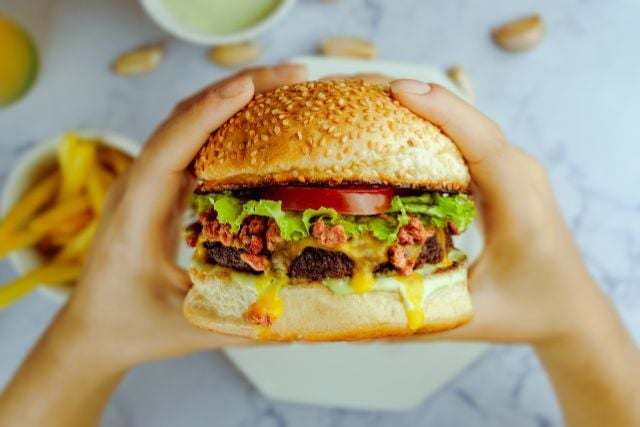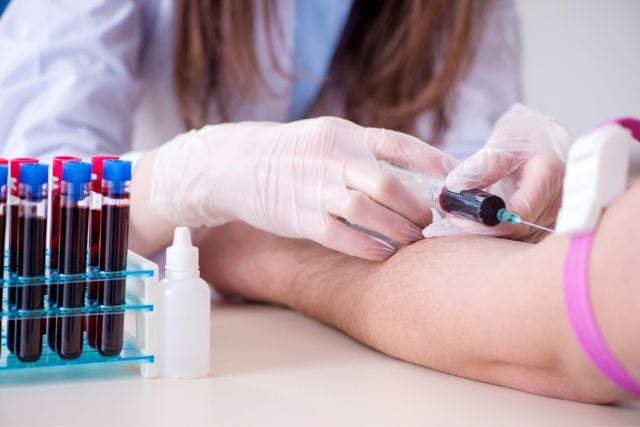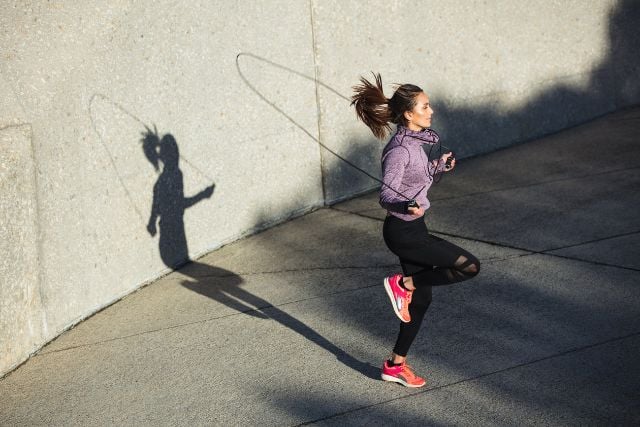Let’s face it. When your pants feel tighter around the waist, you’re probably worried about the fat you can see and pinch. But there’s a more dangerous type hiding deep inside your belly, wrapping around your organs and silently putting your health at risk.
The good news? This visceral fat is actually easier to lose than surface fat, and the same healthy habits that make you feel amazing will specifically target it. Ready to learn how to get rid of visceral fat for good? Let’s dive into the science-backed strategies that actually work.
What Is Visceral Fat: The Hidden Fat That’s Hurting Your Health

Visceral fat wraps around your organs and pumps out chemicals that raise your risk of heart disease, diabetes, and stroke. You can even look slim and still have too much of it. If your waist is over 35 inches (for women) or 40 inches (for men), chances are you do.
Stress, poor sleep, too much sitting, and excess calories all cause visceral fat to build up. The good news? It breaks down faster than regular fat when you start eating better and moving more.
Step 1: Move Your Body Daily (But Not How You Think)

Forget what you’ve heard about endless crunches targeting belly fat. Spot reduction is a myth, and sit-ups won’t touch your visceral fat anyway. It’s too deep for surface exercises to reach.
So, what works? A combination of cardio and strength training. You don’t need to become a gym rat, but you do need to move consistently.
Start with 30 minutes of moderate activity most days. This could be:

- Brisk walking (fast enough that you’re slightly out of breath)
- Cycling at a comfortable pace
- Swimming
- Dancing in your living room
- Hiking on weekends
Add strength training 2-3 times per week. Building muscle is crucial because muscle tissue burns more calories even when you’re resting. You don’t need heavy weights; bodyweight exercises like push-ups, squats, and planks work great.
Try high-intensity interval training (HIIT) once or twice a week. HIIT involves short bursts of intense exercise followed by recovery periods. Even 15-20 minutes can be incredibly effective for burning visceral fat.

For example: alternate between 30 seconds of jumping jacks and 30 seconds of rest for 10 rounds.
Make movement a habit, not an event. Take the stairs, park farther away, have walking meetings, or do stretches while watching TV. These small activities add up and keep your metabolism humming.
The key is consistency over intensity. A 20-minute daily walk will serve you better than one intense workout per week followed by six days of couch time.
Get practical tips and science-backed advice on how to lose fat for men effectively and sustainably for long-term results.
Step 2: Eat to Defeat Visceral Fat

You’ve probably heard that abs are made in the kitchen, and when it comes to visceral fat, this couldn’t be more true. The good news is you don’t need a complicated diet—just some smart swaps and consistent habits.
Focus on whole foods. Fill your plate with:

- Lean proteins (chicken, fish, eggs, beans, tofu)
- Plenty of vegetables (aim for half your plate)
- Whole grains (oats, quinoa, brown rice)
- Healthy fats (avocados, nuts, olive oil)
- Fruits (especially berries, which are packed with antioxidants)
Avoid the visceral fat promoters:

- Trans fats (found in processed baked goods and fried foods)
- Refined sugars and high-fructose corn syrup
- Excessive alcohol
- Highly processed foods
Consider intermittent fasting. Some research suggests that eating within a specific window (like 8-10 hours per day) may help reduce visceral fat. This isn’t magic, it often just helps people eat fewer calories naturally.
Don’t forget about calcium and vitamin D. Studies link adequate levels of these nutrients to lower visceral fat. Load up on leafy greens, dairy products, sardines, and tofu.
Practice portion control without going crazy. Use smaller plates, eat slowly, and stop when you’re satisfied, not stuffed. You don’t need to weigh and measure everything—just be mindful.
Remember, sustainable eating beats perfect eating every time. Make changes you can stick with for months and years, not just weeks.
Step 3: Master Your Sleep Game

If you’re skimping on sleep, you’re sabotaging your visceral fat loss efforts. Poor sleep messes with the hormones that control hunger and metabolism, making you more likely to store belly fat.
Aim for 7-9 hours of quality sleep per night. Not getting enough sleep increases cortisol production, which directly promotes visceral fat storage. But sleeping too much (over 8 hours for young adults) can also be problematic.
Create a sleep-friendly environment:

- Keep your bedroom cool, dark, and quiet
- Put away screens at least an hour before bed (the blue light interferes with melatonin production)
- Stick to a consistent sleep schedule, even on weekends
- Avoid large meals and alcohol close to bedtime
Develop a wind-down routine. This could be reading, gentle stretching, meditation, or a warm bath. The key is signaling to your body that it’s time to rest.
If you’re having trouble sleeping, address the root causes. Stress, anxiety, sleep apnea, or even drinking too much caffeine late in the day can all interfere with quality rest.
Poor sleep creates a vicious cycle: you’re tired, so you crave high-calorie foods for energy, you’re too exhausted to exercise, and your stressed body stores more visceral fat. Break this cycle by prioritizing sleep as much as you do diet and exercise.
Step 4: Tackle Stress Head-On

Chronic stress is visceral fat’s best friend. When you’re constantly stressed, your body produces excess cortisol, which not only promotes visceral fat storage but also makes you crave sugary, fatty comfort foods.
Identify your stress triggers. Is it work deadlines? Financial worries? Relationship issues? Traffic? Once you know what sets you off, you can develop targeted strategies.
Build stress-busting activities into your routine:

- Even 5 minutes of slow, deep breathing can lower cortisol levels
- Apps like Headspace or Calm make meditation and mindfulness practices accessible for beginners
- Try our yoga and similar practices. Combines movement with stress relief
- A walk in the park or even looking at trees from your window can reduce stress hormones
- Spend time on your hobbies. Anything that gets you into a “flow state” where you lose track of time
Make sure to set boundaries. Learn to say no to commitments that drain your energy. Protect your time and mental space.
Prioritize connecting with others. Social support is a powerful stress buffer. Whether it’s friends, family, or a support group, don’t try to handle everything alone.
Consider professional help if needed. If stress feels overwhelming or you’re dealing with anxiety or depression, a therapist can provide valuable tools and support.
The goal isn’t to eliminate all stress (impossible!) but to manage it better so it doesn’t derail your health efforts.
Start your wellness journey with these 24 yoga poses for beginners that help improve flexibility, strength, and balance.
Step 5: Monitor Your Progress (Beyond the Scale)
The scale can be misleading when you’re working on visceral fat loss. You might be building muscle while losing fat, which means the scale might not move much even though your health is improving dramatically.
1. Use a tape measure.

Measure your waist at the level of your belly button (not the narrowest part of your torso). For women, aim to keep your waist under 35 inches; for men, under 40 inches. Even a 2-inch reduction can significantly lower your health risks.
2. Pay attention to how you feel.

Are you sleeping better? Do you have more energy? Are your clothes fitting differently? These are often the first signs that you’re losing visceral fat.
Track your healthy habits, not just outcomes. Did you exercise today? Eat vegetables with most meals? Get enough sleep? These process goals are more motivating than outcome goals because they’re entirely under your control.
3. Consider getting lab work done.

Blood tests can show improvements in cholesterol, blood sugar, and inflammation markers that indicate visceral fat loss, even before you see physical changes.
4. Be patient with yourself.

Visceral fat loss takes time. Typically 2-3 months to see significant changes. The good news is that visceral fat responds faster than subcutaneous fat, so your efforts will pay off sooner than you might expect.
Learn the essential steps to kickstart your fitness journey with this guide on how to start exercising the right way.
Final Thoughts
Learning how to get rid of visceral fat doesn’t require a complete life overhaul overnight. Start with just one or two changes this week. Maybe a 15-minute walk after lunch or swapping your afternoon soda for water.
Remember, visceral fat didn’t accumulate overnight, and it won’t disappear overnight either. But every healthy choice you make is working in your favor. Be patient with yourself, celebrate small wins, and keep moving forward. Your future self will thank you for every step you take toward a healthier you.


